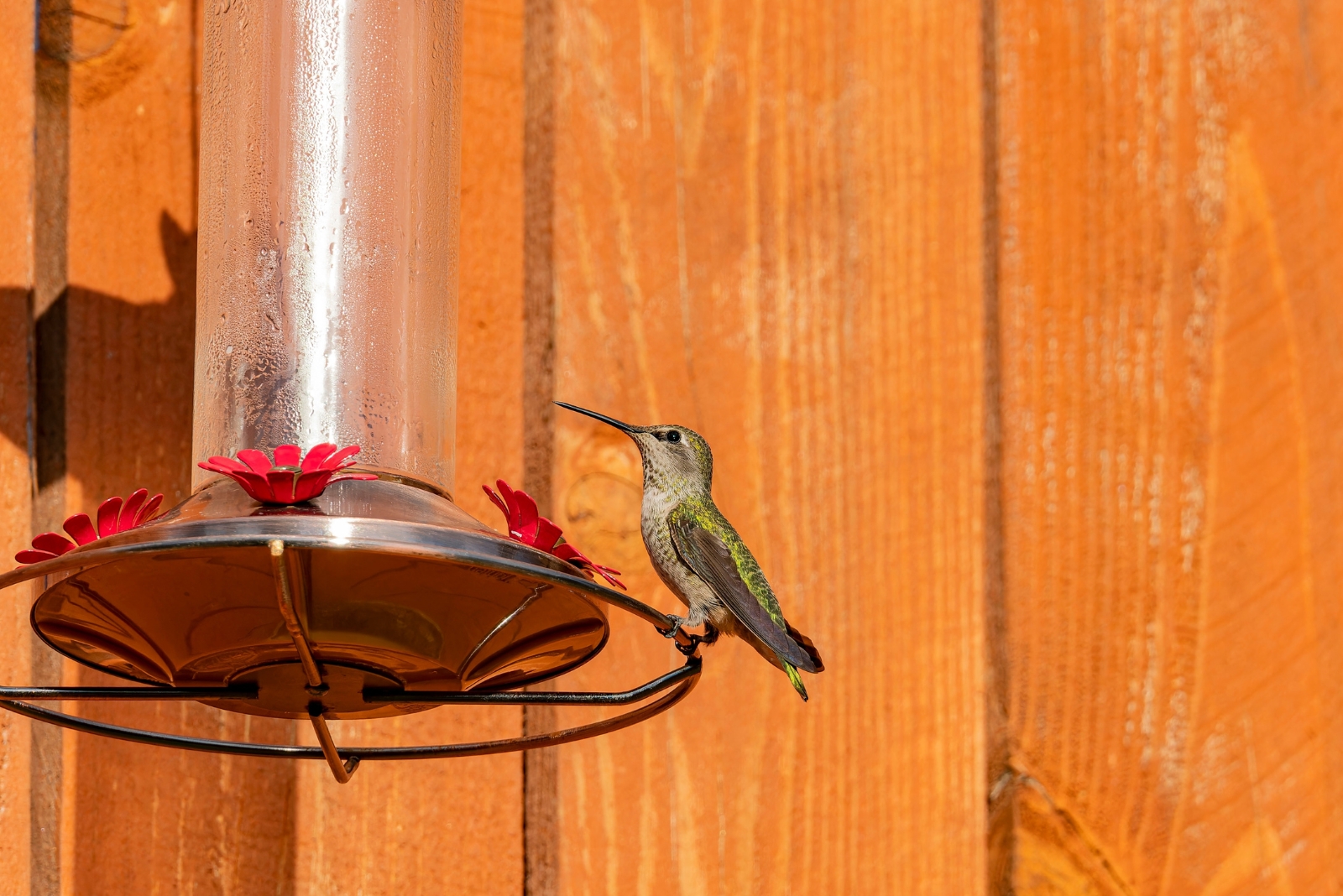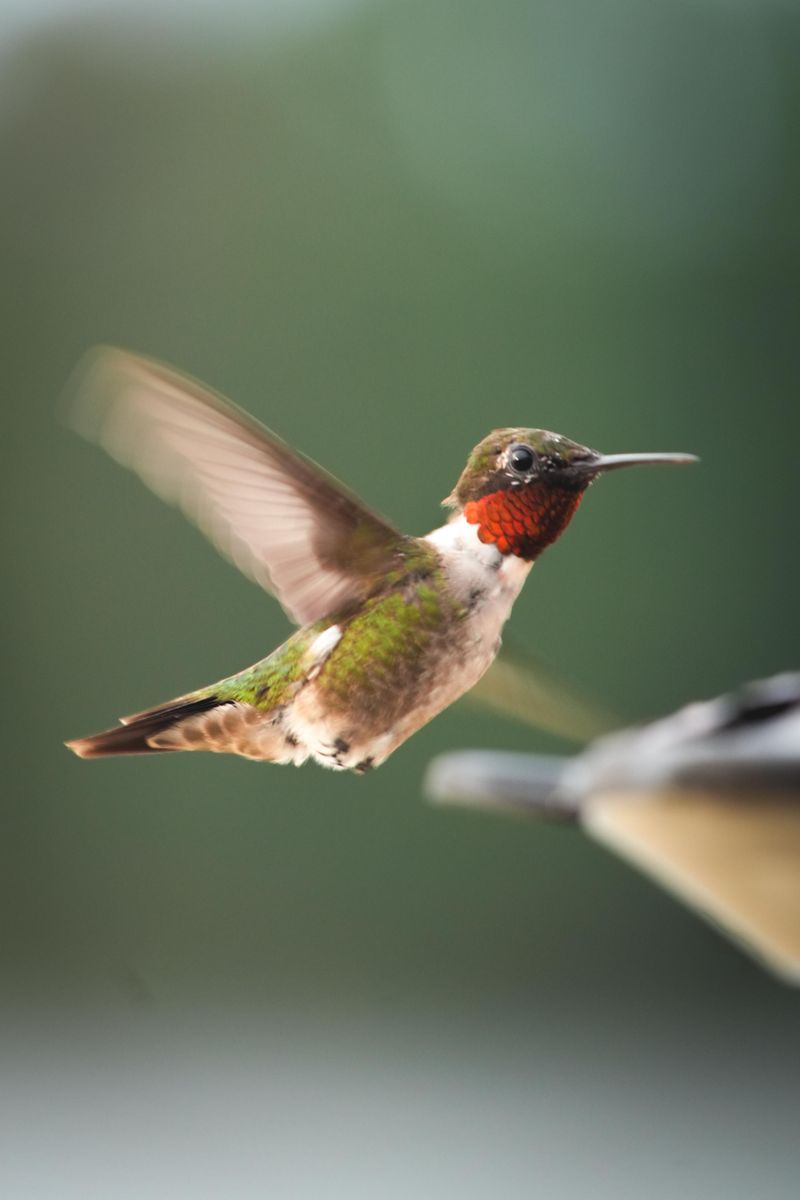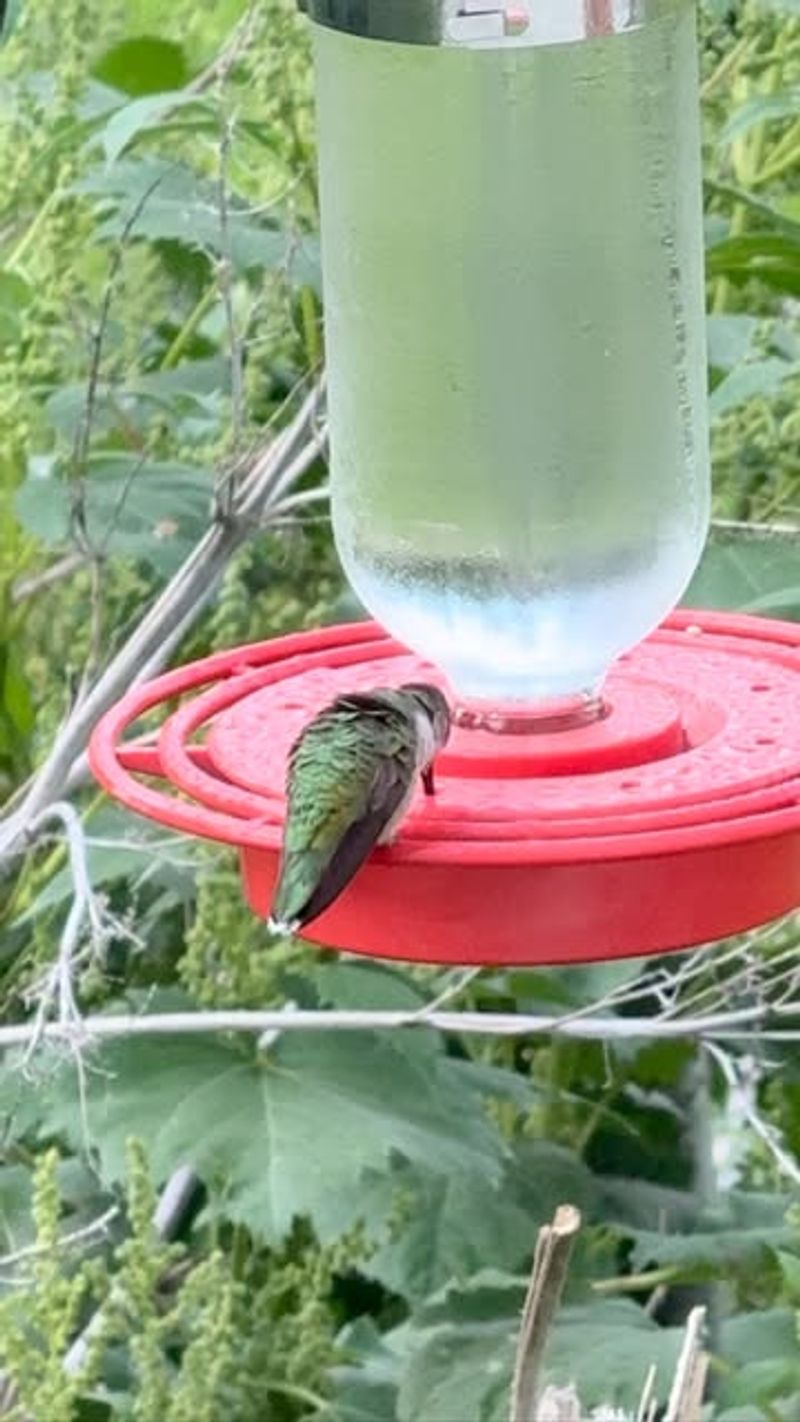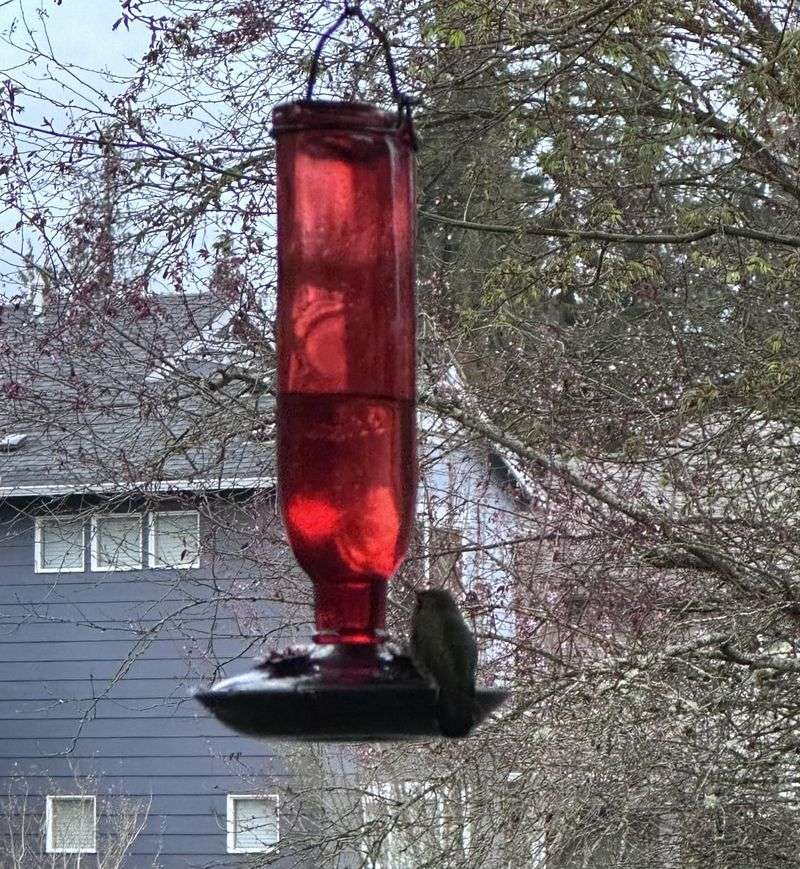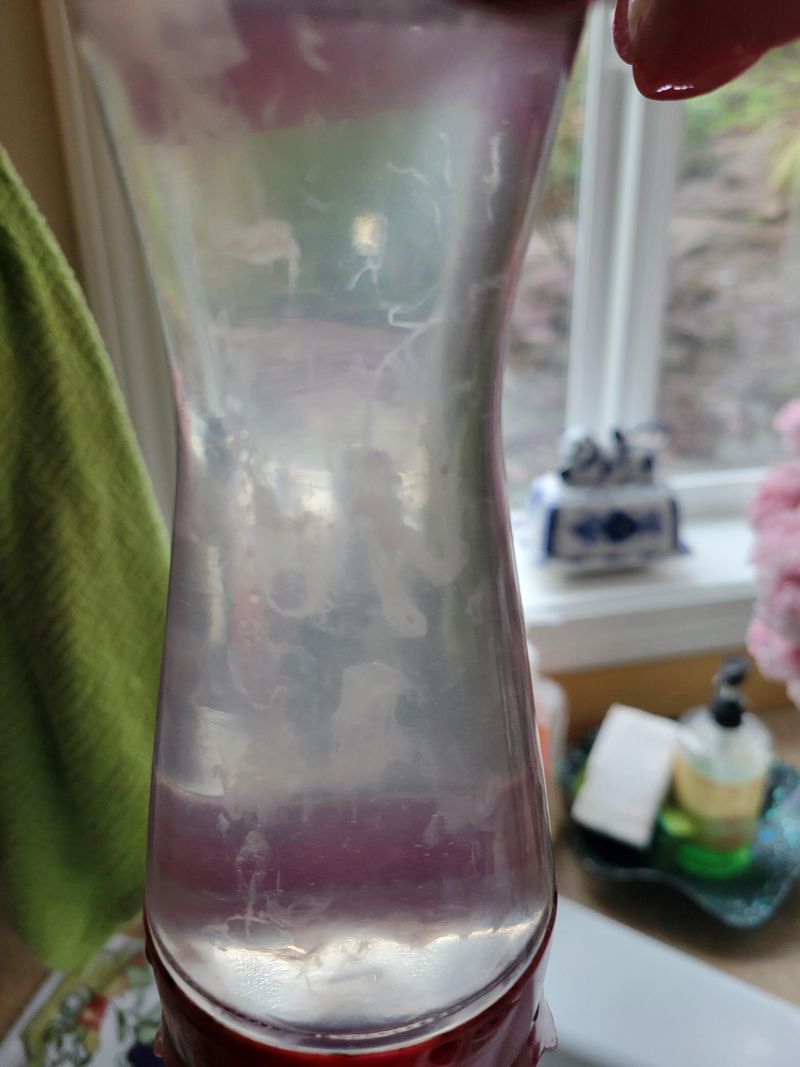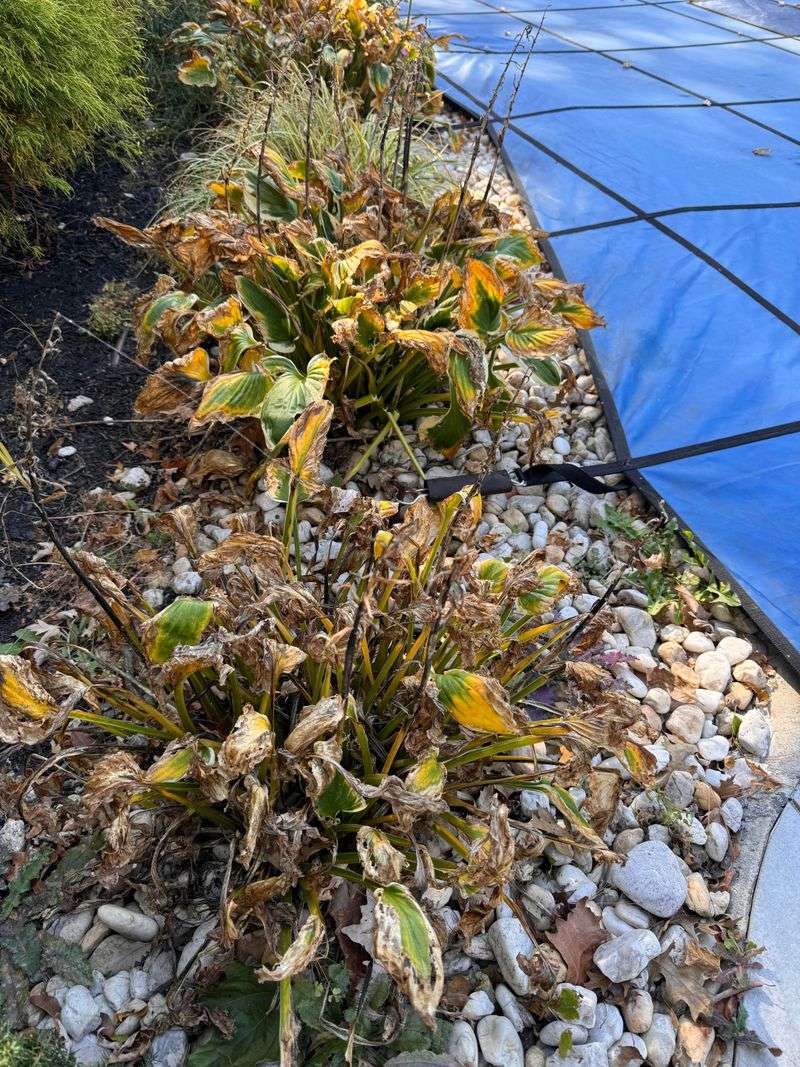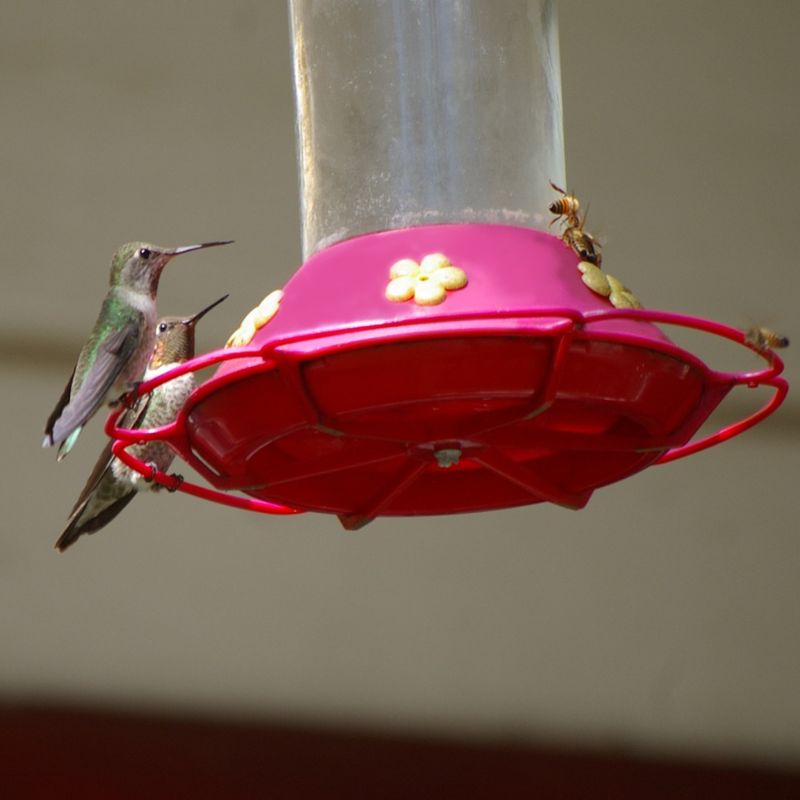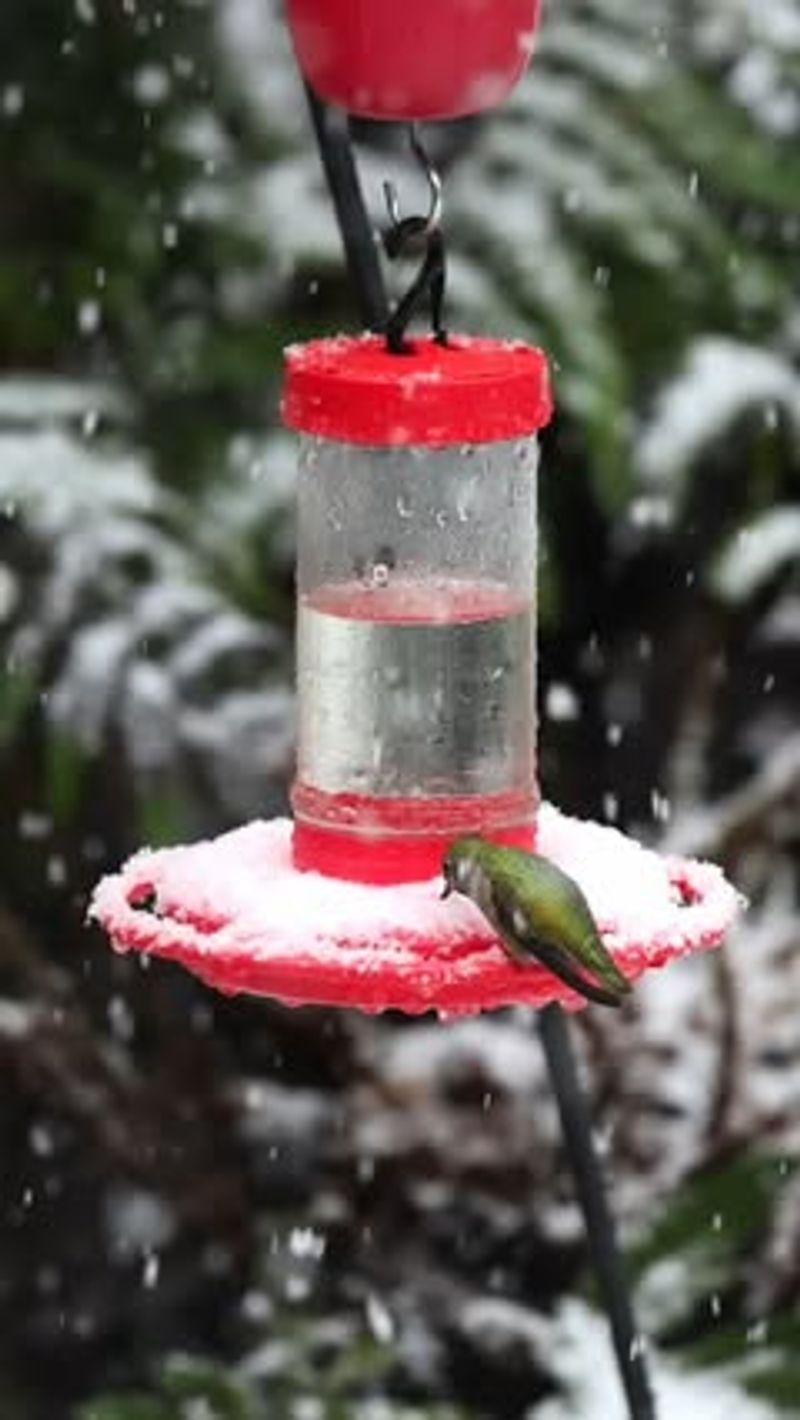Hummingbirds can linger in New Jersey longer than you might think, making timing everything. Take feeders down too early, and you could cut off their last meal before migration.
Leave them too long, and you might attract unwanted guests. Knowing the right moment keeps both you and the birds happy.
1. Migration Season Has Ended
Ruby-throated hummingbirds typically leave New Jersey by late September or early October. Once you haven’t spotted any hummingbirds visiting your feeder for about two weeks, migration has likely wrapped up.
Most birds head south to warmer climates where flowers bloom year-round. Keeping feeders up a bit longer won’t prevent migration since instinct and daylight changes trigger their journey.
In New Jersey, mid-October is usually safe for feeder removal once activity stops completely.
2. Freezing Temperatures Arrive
When nighttime temperatures consistently drop below freezing, sugar water turns into a useless ice block. Hummingbirds can’t drink from frozen feeders, making them pointless to maintain.
Cold weather in New Jersey usually arrives by November, signaling it’s definitely time to bring feeders indoors. Frozen nectar won’t help any late stragglers and could damage your feeder.
Store your clean feeder in a safe spot until spring returns and temperatures warm up again.
3. No Activity For Two Weeks
Silence at your feeder tells an important story. If you haven’t seen a single hummingbird in fourteen days, they’ve moved on to their wintering grounds.
Watching your feeder closely during late September helps you track when the last visitors disappear. New Jersey residents should mark their calendars when activity ceases.
Two weeks without any buzzing wings means it’s safe to take down your feeder until next spring arrives.
4. Mold and Bacteria Growth
Black spots or cloudy nectar indicate dangerous mold and bacteria that can sicken hummingbirds. Once temperatures drop and birds leave New Jersey, maintaining fresh nectar becomes unnecessary work.
Cleaning feeders every few days takes effort, especially when no birds are around to use them. Contaminated feeders pose health risks to any unexpected visitors.
Rather than risk spreading illness, remove your feeder once migration ends and clean it thoroughly for storage.
5. Local Flowers Have Died Back
Nature provides the best calendar for feeder removal. When your garden flowers wilt and stop producing nectar, hummingbirds naturally move elsewhere for food.
In New Jersey, most flowering plants finish blooming by mid-autumn as shorter days and cooler nights arrive. Hummingbirds follow these natural food sources during migration.
If your garden looks brown and lifeless, the birds have already found better feeding spots farther south where flowers still bloom.
6. Wasps and Bees Take Over
Late summer and fall bring aggressive wasps and bees searching for sugar sources before winter. When insects outnumber hummingbirds at your feeder, it becomes more pest station than bird haven.
These insects can actually prevent hummingbirds from feeding safely. In New Jersey, wasp activity peaks right around migration time.
Once the birds leave and insects dominate your feeder, there’s no reason to keep attracting these unwanted visitors to your yard.
7. You’re Heading Into Winter
Preparing your yard for winter includes putting away seasonal items like hummingbird feeders. New Jersey winters bring snow, ice, and harsh conditions that make feeder maintenance impractical.
Most gardeners winterize their outdoor spaces by November, storing delicate items to prevent weather damage. Your feeder deserves the same protection.
Bringing feeders inside keeps them clean and ready for next spring when hummingbirds return to your New Jersey garden once again.

